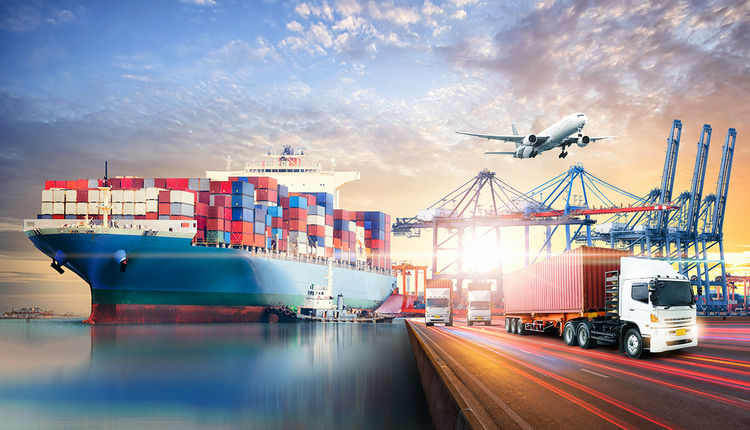One of the most recognizable images of the supply chain crisis is that of nearly 100 container ships waiting to unload in October 2021. Both Los Angeles and Long Beach were represented, as they are sister ports. This summer, the same ports have been uncannily quiet. For the same time period from January to July, 2023 saw a decrease of 24% in the number of twenty-foot equivalent unit (TEU) containers going through the Port of Los Angeles, compared to 2022. The Port of Long Beach experienced an even greater decrease of 28.5%.
Where have the ships gone? Will the decline in shipping volume at these two ports be transitory?
Beneath the tranquility of these two ports, a global supply chain transformation is taking place. This structural change in the chain will affect the future operations of many US ports for years to come.
Two key factors triggered the ongoing supply chain transformation.
First, even the most pro-China US executives now recognize the need to diversify their supplier base away from China. For one thing, they find it costly to source from China due to the rapid rise in labor costs and the persistent 25% import tariffs on goods imported from China. These combinations diminished the economic incentive to source from China.
What’s more, the conventional argument that a China-centric supply chain helps companies tap into the Chinese market is now being called into question. With notable exceptions, such as Tesla’s electric vehicles and Apple’s devices, sales of many US brands have been declining in China since the trade war that began in 2018, and this decline has no signs of abating. For example, GM’s market share in China, including its joint ventures, has fallen from roughly 15% in 2015 to below 10% in 2022. There is a growing sense that American brands are out of favor with Chinese consumers.
Second, prolonged shortages of basic products such as N95 masks and chips during the COVID-19 pandemic have stoked public fear, prompting the White House to develop plans, with bipartisan support, to revitalize American manufacturing and secure critical supply chains for semiconductor chips, pharmaceuticals, EV batteries, and critical minerals.
In the private sector, geopolitical and economic factors have created an urgent need for US companies to diversify their supply base beyond China. To improve the resilience of their supply chains, many US firms are shifting away from China to other friend-shoring countries such as India, Thailand, and Vietnam. In June, Apple announced plans to shift 18% of its global iPhone production to India.
At the same time, many US companies are increasing their sourcing volume from near-shoring countries such as Mexico and Canada to take advantage of the USMCA free trade agreement. In July, HP announced its plan to move production of millions of consumer and commercial laptops to Mexico. In 2022, Mattel announced its plan to expand its existing plant in the northern Mexican state of Nuevo Leon, surpassing other Mattel factories in China, Vietnam, and Malaysia.
These fundamental shifts in the global supply chain will change the dynamics of U.S. shipping, and this change is likely to last for decades.
When US firms were primarily sourcing from China, most containers from China were processed at West Coast ports. In 2017, the West Coast had a 50% market share of all US imports. However, as firms import more from Southeast Asia and the Indian subcontinent, it is faster and cheaper to ship through East Coast ports, including the Ports of New York and New Jersey, the Port of Charleston, and the Port of Savannah via the Suez Canal. By 2023, the West Coast’s share for all of the total US market fell to 42%.
At the same time, as more US companies source from Mexico, shipping volumes through Mexico’s major ports are increasing. In 2021, the number of TEU containers processed at all Mexican ports increased significantly, with the Port of Manzanillo experiencing a 15.9% increase over the previous year.
This shift in volume is taking shape as one million TEU containers per year have shifted from West Coast ports to East Coast and Mexican ports.
In the foreseeable future, West Coast ports are unlikely to regain their market share in the foreseeable future for two major reasons.
First, West Coast port operations are primarily dependent on the import and export volumes between the US and China. With the US de-risking its supply chains and as Chinese consumers are shunning US goods amid continuing tensions, the volume of trade between these two major economies is unlikely to increase in the near term. Import volumes from China are unlikely to increase as US firms make investments and commitments to shift their supply base elsewhere.
Similarly, the volume of exports to China is unlikely to increase, especially when China’s economy faces headwinds ranging from an aging population, property woes, a high youth unemployment rate, and low consumer confidence.
Second, West Coast ports are inefficient, unreliable, and less competitive than East Coast ports. The ports of Los Angeles and Long Beach are notoriously inefficient. Out of 351 container ports in the world, the World Bank ranked the Port of Los Angeles 336th, and Long Beach 346th. On top of that, shipping through West Coast ports is expensive and will become even more so. After a labor contract expired in July 2022, it took eight months of negotiations between the International Longshore and Warehouse Union and the Pacific Maritime Association to reach a tentative agreement in June 2023. The new agreement includes eight to 10% in the first year and retroactive pay at that increased rate for the hours that dock workers worked during the eight months without a contract.
The ongoing global supply chain transformation is reshaping ocean routes and shifting shipping volumes at US ports. With this inevitable trend, the writing is on the wall for the once-majestic ports of Los Angeles and Long Beach. Adapt or perish. The choice is stark, and the time to evolve is now.
Tinglong Dai is a professor of operations management and business analytics at Johns Hopkins University’s Carey Business School and co-chairs the Johns Hopkins Workgroup on AI and Healthcare, part of the Hopkins Business of Health Initiative. Christopher S. Tang is UCLA distinguished professor and the Edward W. Carter Chair in business administration. He is senior associate dean of Global Initiatives, and faculty director of the Center for Global Management at the UCLA Anderson School of Management.
This article originally appeared in the 2023 Global/Cross-Border edition of PARCEL.













